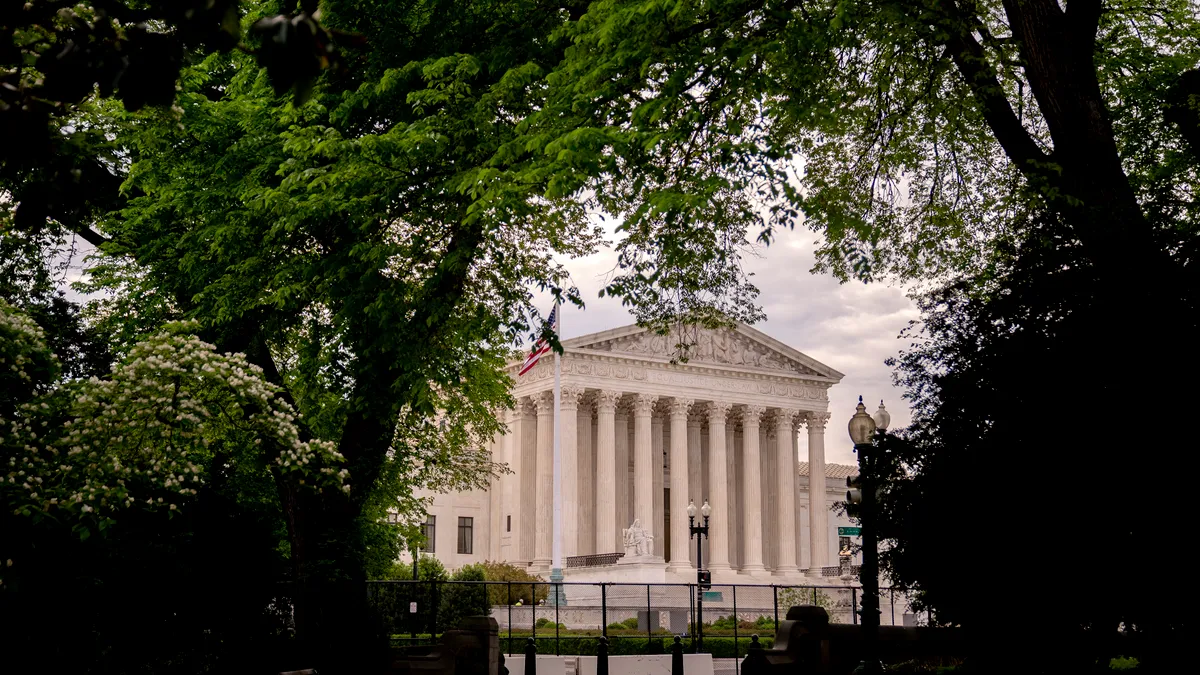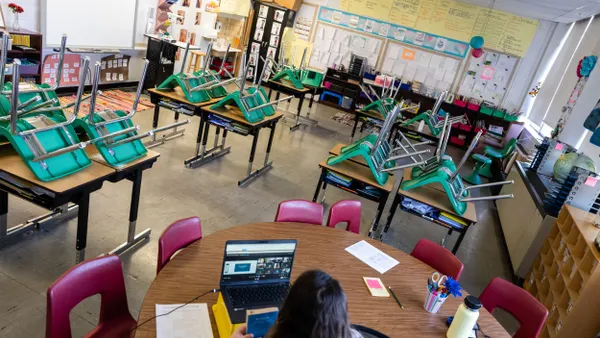Dive Brief:
-
Supreme Court justices seemed split along ideological lines during oral arguments Monday in Kennedy v. Bremerton School District, a First Amendment case on the constitutionality of a Washington football coach's decision to pray following football games.
-
Major questions were presented about whether former Bremerton High School football coach Joseph Kennedy's prayer ritual created a coercive environment for students and about the difference between private and public speech in a school setting. Arguments also touched on whether the coach was on duty during the time of his prayers, and the school district's need to manage disruptions that the prayers led to.
-
The justices debated various hypothetical situations district leaders may have to consider when disciplining prayer in the classroom, including how audible and visible the prayer is, as well as the location (in front of the classroom with students or at the 50-yard line of a football field) and timing of prayer (before or during class).
Dive Insight:
For a teacher, "the duty is not from the beginning of the bell to the end of the bell, the duty is while she is in the classroom," said Justice Sonia Sotomayor on Monday morning. "So why can't an employer tell an employee what they're permitted to do — personal or otherwise — during that time?" asked Sotomayor, making an analogy to the coach's responsibilities during football games. Sotomayor is considered a liberal justice.
After much debate over whether the prayers fell under Kennedy's responsibilities, the coach's lawyer argued "he was on duty in a loose sense, but he was not on duty in a real sense."
Arguments over student coercion and whether players felt pressured to participate in the coach's prayers surfaced on both sides of the case. "We're concerned about implicit coercion as well as explicit coercion," said Justice Neil Gorsuch, who leans more conservative.
Given the conservative majority bench, it is considered possible the outcome will favor Kennedy.
"If the school district is not successful in the case, it will create a scenario in our public schools where administrators have to make very difficult judgment calls in the moment about what type of employee-led prayer is appropriate [and] inappropriate," said Sasha Pudelski, advocacy director for AASA, the School Superintendents Association. AASA filed an amicus brief in support of Bremerton School District.
Pudelski added that Kennedy v. Bremerton "is a very important case for administrators to pay attention to," and if it is decided in favor of Kennedy "will present some very tricky, complicated scenarios for principals, school leaders and district leaders."
Prior to the oral arguments, legal experts predicted the case could impact how districts craft policies around employee speech and religious exercise.
The problem of prayer in school, and what worries justices, is religious groups thinking others are being favored, Justice Stephen Breyer said during Monday's session.
"So we have a kind of neutrality," he said. "This doesn't seem like a new problem, it just seems like a line-drawing problem."
The decision also depends on the facts of the case, some of which were disputed on either side. This is rare for Supreme Court cases, which usually focus on legal arguments rather than facts, according to Jesse Panuccio, partner at law firm Boies Schiller Flexner and former official at the U.S. Department of Justice.
"The disagreement about the core facts of the case was a striking feature of the argument," Panuccio said in an email. "Which facts the Court decides to focus on will likely dictate the outcome of the case."
While it's possible the court will use the case to clarify that the government does not violate the separation of church and state by accommodating private religious practices, Panuccio said, it's likely the justices will write a narrow opinion and not broaden their decision to explore hypothetical situations districts may face.













